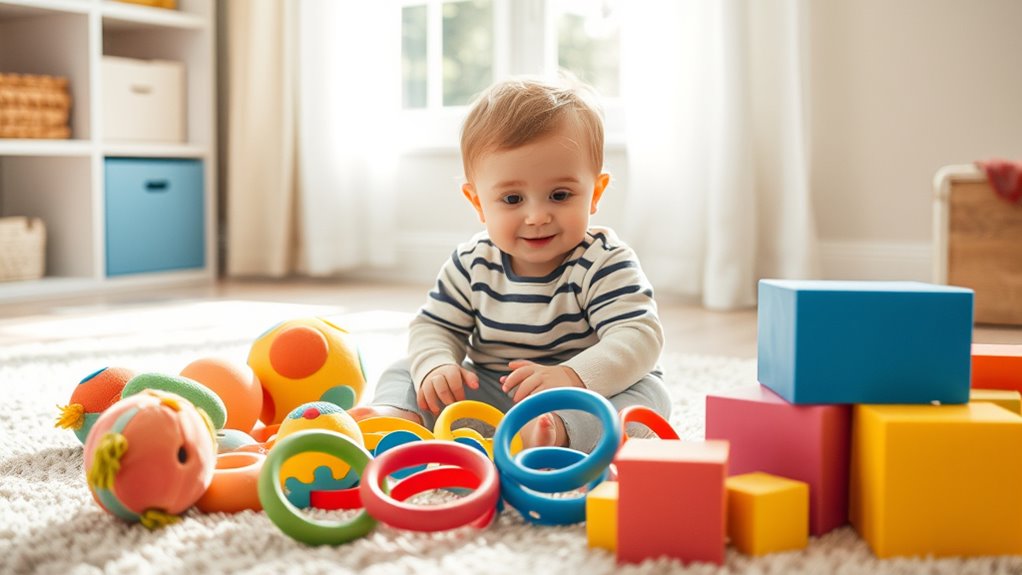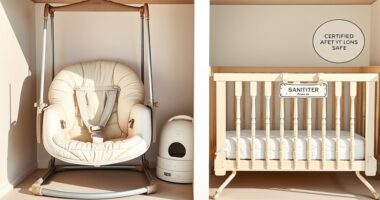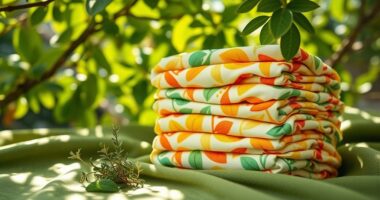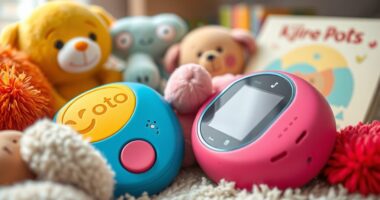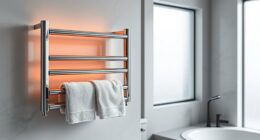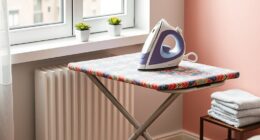Sensory toys for toddlers promote development by engaging their senses and encouraging exploration. They support physical, cognitive, and emotional growth through activities like music, texture, and multi-sensory play. These toys help your child develop fine motor skills, improve sensory processing, and build confidence as they discover new materials and sounds. By fostering curiosity and problem-solving, sensory toys lay a strong foundation for future skills—keep exploring to learn more about choosing the best options for your little one.
Key Takeaways
- Sensory toys stimulate physical, cognitive, and emotional growth by engaging multiple senses and encouraging exploration.
- Music-based toys develop auditory skills, cause-and-effect understanding, and boost creativity in toddlers.
- Textured toys enhance tactile experiences, refine fine motor skills, and improve sensory processing abilities.
- Multi-sensory toys combine sound and texture to promote sensory integration and support daily skill development.
- Overall, sensory toys foster curiosity, confidence, and foundational skills essential for future learning and development.
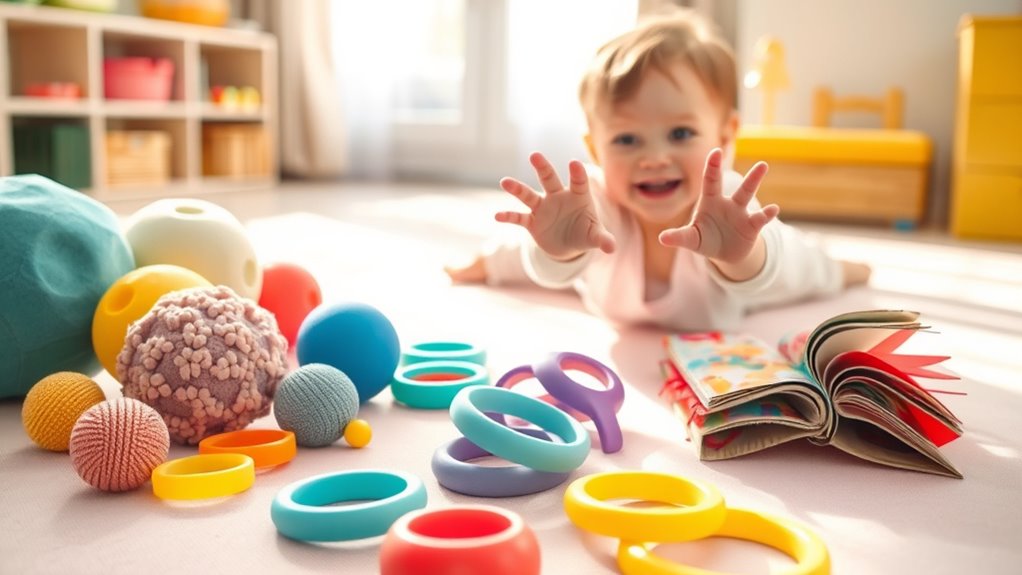
Sensory toys play an essential role in your toddler’s development by engaging their senses and encouraging exploration. These toys provide a rich environment for your little one to discover and learn about the world around them. One key aspect of this exploration involves music exploration, where your toddler interacts with toys that produce sounds, melodies, or rhythms. When your child taps, shakes, or presses musical toys, they begin to understand cause and effect, develop their auditory senses, and even start to recognize patterns. Music exploration also fosters their creativity and may boost their language skills as they mimic sounds or try to sing along. As your toddler experiments with different tones and beats, they’re not just having fun—they’re building foundational skills for cognitive and emotional development.
Texture discovery is another vital component of sensory play. When your toddler touches various textured toys, they learn about different surfaces, such as soft, rough, smooth, or bumpy. This tactile experience helps refine their fine motor skills and enhances their sensory processing abilities. For example, a textured sensory ball or fabric with multiple surfaces invites your child to explore through their hands and fingers. As they press, squeeze, or feel different textures, they develop a better understanding of physical properties and improve their hand-eye coordination. Texture discovery also stimulates their curiosity and helps them learn to differentiate between various materials, which is essential for their cognitive growth.
You’ll notice that sensory toys designed for music exploration and texture discovery often combine these elements, creating a multi-sensory experience. A toy might play gentle melodies while featuring different textured surfaces for your child to touch and feel. These combined stimuli keep your toddler engaged and promote more comprehensive learning. As they manipulate these toys, they enhance their sensory integration skills, which are fundamental for everyday activities like dressing, eating, and playing. Additionally, STEM toys can be incorporated into sensory play to further support problem-solving and critical thinking skills through hands-on exploration. These experiences can calm or energize your child, depending on the stimuli and their mood.
Multi-sensory toys enhance learning, calm or energize, and support daily skills development.
Encouraging your toddler to explore with sensory toys isn’t just about entertainment; it’s about supporting their overall development. By providing opportunities for music exploration and texture discovery, you’re helping them build a strong sensory foundation that benefits their physical, cognitive, and emotional growth. These simple yet powerful toys make learning fun, fostering curiosity and confidence as your child begins to understand and interact with the world around them.
Frequently Asked Questions
Are Sensory Toys Safe for All Toddlers?
Yes, sensory toys are generally safe for toddlers, but you should always supervise their play. Watch out for sensory overload, which can overwhelm some children. Also, check for choking hazards like small parts or loose pieces, especially with plush or plastic toys. Choose age-appropriate options, and regularly inspect toys for damage. This way, your toddler can enjoy the benefits of sensory play without risks.
How Do I Choose Age-Appropriate Sensory Toys?
To choose age-appropriate sensory toys, consider your child’s current developmental milestones and focus on sensory integration. Look for toys that match their age, offering safe textures, sounds, and visuals to stimulate their senses without overwhelming them. Check for clear age recommendations on packaging, and make certain they promote fine and gross motor skills. Always supervise playtime to keep your toddler safe while they explore and develop confidently.
Can Sensory Toys Help Children With Sensory Processing Disorder?
Sensory toys can be a lifeline for children with sensory processing disorder, acting like a bridge to sensory integration. They offer tactile stimulation, helping your child better understand and respond to their environment. Think of these toys as a gentle handshake that calms and engages. By providing targeted sensory input, you support your child’s development and comfort, making everyday experiences easier and more enjoyable for them.
How Often Should I Rotate Sensory Toys?
You should rotate sensory toys every few weeks to prevent sensory overload and keep your toddler engaged. Using rotating schedules helps maintain their interest and guarantees they don’t become overwhelmed or bored. Pay attention to their reactions; if they seem overstimulated or uninterested, switch the toys sooner. Regular rotation encourages exploration while supporting their sensory development and helps maintain a balanced, calming environment.
Are DIY Sensory Toys Effective Compared to Store-Bought Ones?
DIY sensory toys can be very effective because they offer customizable benefits tailored to your toddler’s needs, encouraging creativity and fine motor skills. While store-bought toys often meet safety standards and are convenient, DIY options provide the advantage of personalizing textures, colors, and shapes. Both types promote development; choose based on your child’s preferences and safety considerations, combining the benefits of both for a well-rounded sensory experience.
Conclusion
Incorporating sensory toys into your toddler’s playtime is like planting seeds for their growth. These toys stimulate their senses and boost development, making learning fun and engaging. By choosing the right sensory toys, you’re giving your little one tools to explore and understand the world around them. Just as a garden flourishes with care, your child will thrive with the right sensory experiences, setting a strong foundation for their future growth and discovery.
